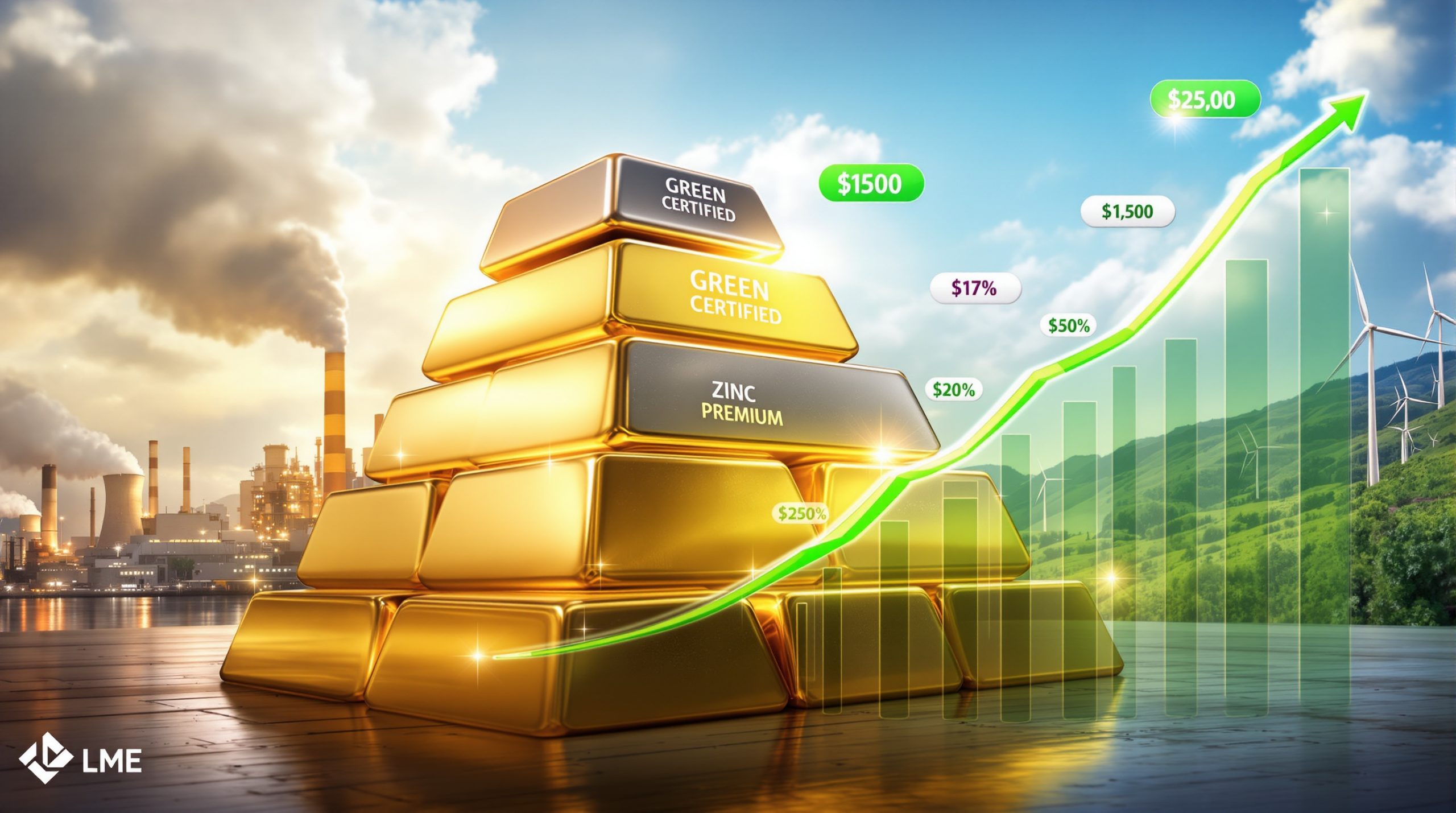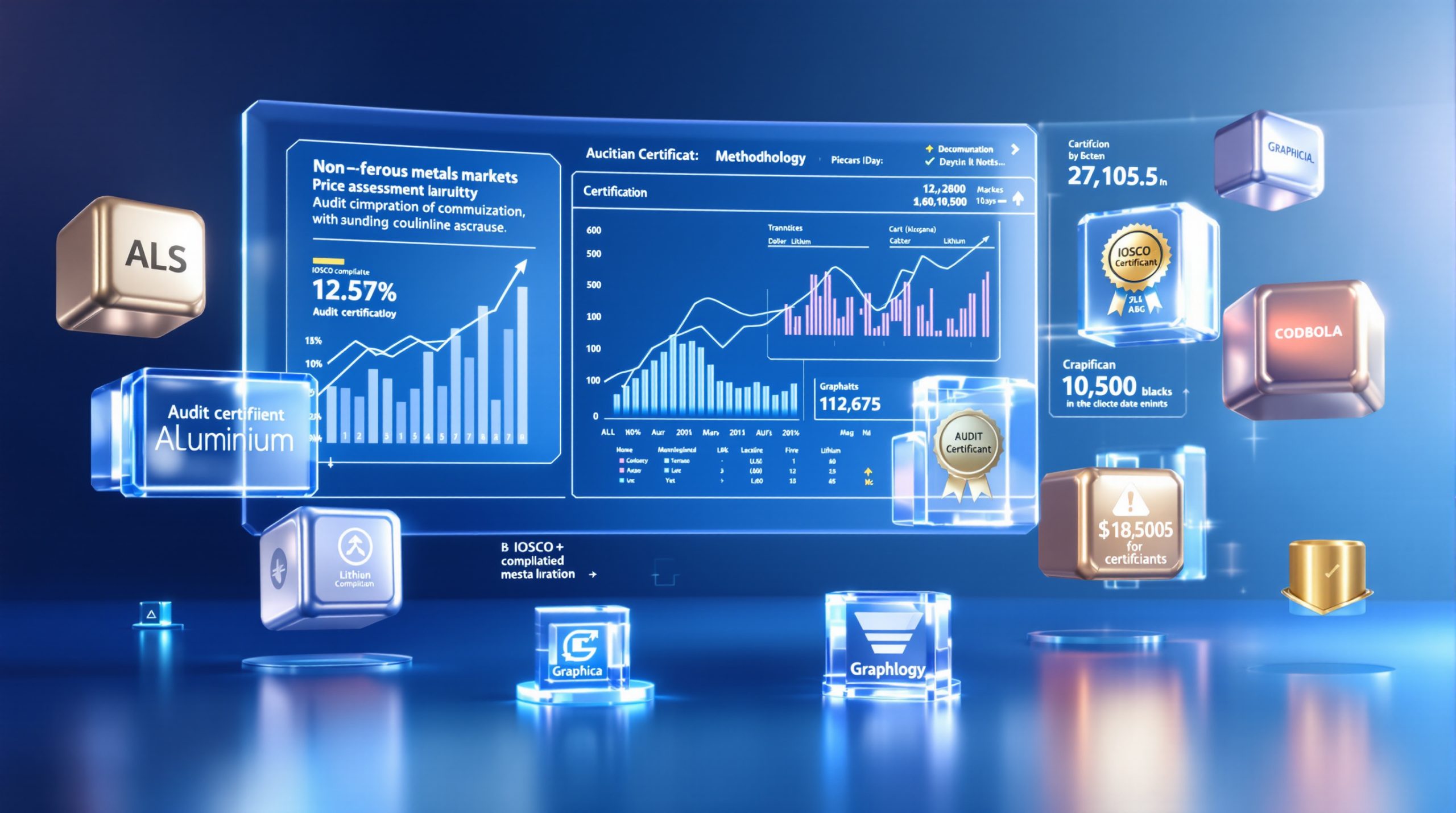Understanding Copper's 2025 Rally: China's Demand as the Key Market Driver
Recent Price Movements and Market Milestones
Copper markets have witnessed remarkable momentum in 2025, with prices reaching approximately $10,644 per metric ton as of mid-October. The industrial metal touched the significant $11,000 per metric ton threshold on October 9, marking a historic milestone that has only occurred on two other trading days in the London Metal Exchange's long history. This price point brought copper within striking distance of its all-time high of $11,104.50 established in May 2024.
The rally hasn't been without volatility, however. Following US President Donald Trump's recent threats to impose higher tariffs on Chinese goods, copper experienced a notable pullback, highlighting the market's sensitivity to geopolitical developments affecting the world's largest consumer.
Despite this temporary setback, copper's performance throughout 2025 has remained impressive, buoyed by persistent dollar weakness that has supported commodity prices broadly across the board.
Key Market Indicators Driving the Rally
Several fundamental factors have converged to propel copper higher in 2025. The weak US dollar has provided consistent support for commodity prices, making dollar-denominated metals more attractive to international buyers. This currency effect has amplified the impact of physical market dynamics.
Supply disruptions have emerged as a significant price driver, with mining incidents at major operations creating legitimate concerns about copper availability. These production challenges have shifted market balance projections, with some analysts revising their outlook from surplus to deficit.
Market sentiment has also played a crucial role, with growing speculative positioning contributing to price momentum. Financial investors have increased their bullish exposure to copper, potentially amplifying price movements beyond what physical fundamentals might otherwise support.
Interestingly, inventory levels across major exchanges have shown mixed signals. While some regions display tightening supplies, others suggest more abundant availability, creating a complex picture for market participants to interpret.
What Supply Disruptions Have Impacted Copper Markets in 2025?
Major Mining Incidents and Production Shortfalls
The copper market has experienced significant production disruptions in 2025, with the force majeure declaration at Indonesia's Grasberg mine standing out as particularly impactful. This operational failure at one of the world's premier copper mines has sent ripples throughout global copper supply forecast.
The Grasberg disruption proved so significant that it prompted the International Copper Study Group to revise its 2026 forecast from a surplus to a 150,000-ton deficit. This dramatic shift underscores how vulnerable the copper supply chain remains to individual mine disruptions.
Beyond Grasberg, multiple operational challenges have affected production facilities worldwide. These disruptions have coincided with an industry already grappling with declining ore grades at major producing mines, further constraining output growth.
While the International Copper Study Group still expects a 178,000-ton surplus for 2025, the outlook for 2026 has deteriorated substantially, highlighting how quickly market balances can shift in response to supply-side developments.
Supply Chain Vulnerabilities Exposed
The 2025 disruptions have exposed the fragility of global copper supply networks. Development timelines for new copper projects continue to extend, limiting the industry's ability to respond quickly to shortfalls from existing operations.
David Wilson, senior commodities strategist at BNP Paribas, offered a more measured perspective on these supply challenges, stating: "No one's struggling to get copper." This viewpoint suggests that while headline disruptions create market anxiety, physical metal remains accessible to industrial consumers who need it.
The interplay between immediate supply shortages and longer-term production capacity has become increasingly complex. Environmental regulations, resource nationalism, and financing constraints have all contributed to a challenging environment for expanding copper output.
These supply chain vulnerabilities have been further complicated by shifting trade flows resulting from geopolitical tensions. The threatened tariff increases between the US and China have already begun reshaping copper trading patterns, with inventory buildups in some regions occurring in anticipation of trade policy changes.
Is China's Copper Demand Strong Enough to Sustain the Rally?
Current Chinese Consumption Patterns
China remains the dominant force in global copper markets, with its infrastructure and manufacturing sectors requiring enormous quantities of the metal. The strategic importance of copper to China's economic ambitions cannot be overstated, particularly as the country advances its energy transition initiatives.
Inventory levels at the Shanghai Futures Exchange provide important clues about Chinese demand conditions. Current stocks stand at approximately 110,000 tons, marking their highest level since April 2025. However, this figure remains down nearly 60% from February 2025 levels, suggesting substantial drawdowns over the past eight months.
This significant reduction in visible Chinese copper stocks could indicate strong copper rally China demand or strategic stockpiling, or some combination of both. Determining which factor predominates presents a challenge for market analysts attempting to gauge sustainable demand.
Market observers continue debating whether China's apparent copper consumption reflects genuine industrial usage or inventory positioning ahead of anticipated price moves or policy changes.
Economic Indicators and Stimulus Measures
The relationship between Chinese economic growth and copper demand remains a critical market driver. While growth has moderated from historical rates, China's emphasis on infrastructure development and manufacturing advancement continues to support substantial copper consumption.
ING analyst Ewa Manthey highlighted this dynamic, noting: "For that rally to gain further momentum, we will also need to see strong demand growth, particularly from China. However, if China ramps up metals-intensive stimulus, it would boost demand and prices further."
The potential for metals-intensive stimulus programs represents a significant upside risk for copper markets. Infrastructure initiatives focused on power grid modernization, transportation networks, and renewable energy would substantially increase surging copper demand.
Manufacturing sector health serves as another key determinant of sustained demand. China's production of electronics, appliances, and electrical equipment drives substantial copper consumption, making manufacturing PMI data and export statistics important indicators for copper market participants.
What Do Copper Inventories Tell Us About Market Fundamentals?
Global Inventory Analysis
Copper inventories across major exchanges provide critical insights into market fundamentals, though interpreting these signals requires nuanced analysis. Combined stocks across the London Metal Exchange, Shanghai Futures Exchange, and Comex currently total approximately 556,000 tons.
The distribution of these inventories reveals important regional dynamics. Nearly half of global exchange inventories are concentrated in the Comex system, indicating relative abundance in the United States. This concentration suggests pre-tariff stockpiling has created regional surplus conditions in North America.
Shanghai inventory trends tell a different story, with stocks down almost 60% from February 2025 despite recent increases. This dramatic drawdown suggests strong Chinese demand or strategic positioning has significantly reduced available supplies in the world's largest consuming nation.
These regional imbalances highlight how copper markets have become increasingly fragmented, with material availability varying significantly by location due to trade policies, logistical constraints, and regional demand patterns.
Interpreting Inventory Signals
A fascinating disconnect has emerged between physical availability and price movements. Despite copper's approach toward record prices, BNP Paribas analyst David Wilson observed that "No one's struggling to get copper," suggesting the market isn't experiencing acute physical shortages that typically accompany price spikes.
This apparent contradiction may stem from the relationship between visible exchange stocks and off-exchange inventories. Significant quantities of copper may reside in private warehouses, in-transit shipments, or consumer stockpiles that don't appear in published inventory figures.
Regional imbalances in copper distribution and accessibility further complicate inventory interpretation. Material may be abundant globally while remaining scarce in specific locations or for particular specifications and delivery timeframes.
Market participants increasingly recognize inventory metrics as imperfect indicators that must be analyzed alongside other factors. Price premiums, warehouse queue lengths, and physical delivery metrics often provide additional context for understanding true market conditions.
How Are Speculative Investors Influencing the Copper Market?
Fund Positioning and Market Impact
Financial investors have played a significant role in copper's 2025 rally, potentially amplifying price movements beyond what physical fundamentals might otherwise justify. The dynamic between speculative positioning and industrial demand has become increasingly important for understanding market behavior.
David Wilson of BNP Paribas highlighted this interaction, stating: "Funds can push an industrial metal up, but then the industrial consumers will just go, 'All right, we're not buying.'" This observation captures the potential disconnect between financial market enthusiasm and physical market reality.
When speculative positioning becomes extreme, prices can temporarily detach from industrial consumption patterns. However, these divergences typically prove unsustainable, as physical buyers ultimately determine long-term price equilibrium through their purchasing decisions.
Historical patterns of speculative cycles in copper markets show that financial positioning can accelerate price trends in both directions. When funds build substantial long positions during rallies, subsequent liquidation phases often trigger sharp corrections once physical demand fails to materialize at elevated price levels.
Market Sentiment Indicators
Bullish positioning ahead of major industry events like LME Week can create self-reinforcing price momentum. These trading gatherings often coincide with market positioning adjustments as participants react to industry outlooks and consensus views.
Geopolitical headlines significantly impact trader psychology, as evidenced by copper's price pullback following President Trump's tariff threats against China. These knee-jerk reactions to political developments frequently create short-term volatility independent of fundamental supply-demand conditions.
Technical price levels exert considerable influence on trading decisions, with psychological thresholds like $11,000 per ton attracting particular attention. As copper approaches these landmarks, positioning often intensifies, with momentum traders adding exposure while others take profits.
Professional market participants must constantly balance fundamental analysis against momentum-driven trading realities. While long-term price trajectories generally reflect supply-demand fundamentals, short-term movements can be dominated by positioning, sentiment, and technical factors.
What Are the Competing Analyst Views on Copper's Outlook?
Bullish Perspectives
The bullish case for copper centers on structural supply deficits that appear increasingly likely in coming years. The International Copper Study Group's projection of a 150,000-ton deficit for 2026 supports this view, suggesting demand will outpace available supply.
Long-term electrification trends underpin sustained demand growth expectations. The global energy transition requires enormous quantities of copper for electric vehicles, renewable energy generation, and grid modernization, creating a multi-decade demand tailwind.
Limited new project pipeline development constrains future supply growth. Environmental permitting challenges, resource nationalism, and financing hurdles have extended development timelines for major copper projects, restricting the industry's ability to rapidly increase production capacity.
The strategic importance of copper in energy transition technologies has elevated its status among industrial metals. Government policies supporting decarbonization indirectly support copper demand, potentially creating price support even during broader economic slowdowns.
Bearish Considerations
Bearish analysts express concerns about actual industrial consumption versus speculative buying. When prices approach record levels, the risk increases that financial positioning rather than physical demand drives market dynamics.
The potential impact of global economic slowdowns presents another risk factor. Copper's sensitivity to construction and manufacturing activity makes it vulnerable to economic downturns, particularly if China's growth moderates further.
BNP Paribas projects a "balanced" copper market in 2026 after adjusting for lower Grasberg output, contrasting with more bullish forecasts of structural deficits. This equilibrium view suggests prices may struggle to sustain new records without additional supply disruptions.
Industrial consumers potentially deferring purchases at elevated price levels creates another headwind. As David Wilson noted, when prices rise too aggressively, industrial buyers may postpone non-essential purchases, creating demand destruction that eventually pressures prices lower.
How Could China's Economic Policies Impact Copper's Trajectory?
Potential Stimulus Scenarios
The potential for metals-intensive infrastructure programs in China represents perhaps the most significant upside catalyst for copper markets. Transportation, power grid, and urban development initiatives would substantially increase copper consumption if implemented at scale.
The relationship between construction activity and copper demand remains particularly strong. Residential and commercial building construction requires significant copper inputs for electrical wiring, plumbing, and HVAC systems, making China's property sector policies highly relevant for copper markets.
Manufacturing sector support measures could further boost copper requirements. Government initiatives targeting electronics, appliances, and electrical equipment production would increase copper consumption in these copper-intensive manufacturing segments.
Energy transition initiatives may drive substantial additional copper demand. China's ambitious renewable energy and electric vehicle targets necessitate massive copper investments, potentially creating structural demand growth independent of traditional economic cycles.
Policy Signals to Monitor
Chinese government statements on economic growth targets provide important context for copper demand expectations. Official GDP goals signal the intensity of government commitment to supporting economic activity that drives commodity consumption.
Infrastructure investment announcements and implementation timelines directly impact copper price prediction. The scale, timing, and copper-intensity of announced projects help quantify potential consumption growth.
Property sector support measures affecting construction activity warrant close monitoring. Given real estate's outsized contribution to Chinese copper demand, policies aimed at stabilizing or stimulating property development significantly influence market balances.
Green energy and electrification initiatives continue driving substantial copper requirements. Policy targets for renewable energy capacity, electric vehicle adoption, and grid modernization translate directly into copper consumption forecasts.
What Geopolitical Factors Could Disrupt Copper's Rally?
US-China Trade Tensions
The impact of threatened tariff increases on copper trade flows has already created market volatility. President Trump's recent statements regarding potential new tariffs on Chinese goods prompted immediate price reactions, highlighting the market's sensitivity to trade policy developments.
Potential retaliatory measures affecting mining investments could further complicate market dynamics. Trade disputes often expand beyond tariffs to include investment restrictions, regulatory scrutiny, or other measures that might impact copper project development or existing operations.
Pre-emptive stockpiling behavior ahead of trade policy changes distorts short-term market signals. The significant inventory buildup in the Comex system likely reflects strategic positioning ahead of anticipated tariff implementation, creating temporary imbalances that complicate fundamental analysis.
Regional price differentials have emerged from existing trade restrictions, with physical premiums varying significantly across major consumption hubs. These regional disconnects can create arbitrage opportunities while complicating global price discovery.
Global Supply Chain Realignment
Strategic resource nationalism affecting copper mining jurisdictions has intensified in recent years. Producer countries increasingly seek greater economic benefits from their mineral resources, implementing higher royalties, local content requirements, or ownership restrictions that impact investment decisions.
Shifting investment patterns have emerged in response to geopolitical risks. Mining companies increasingly factor political stability, trade relationships, and geopolitical alignment into development decisions, potentially redirecting capital from politically complex jurisdictions despite favorable geology.
Supply chain resilience initiatives are creating new demand centers as industrial consumers diversify sourcing. This geographic diversification aims to reduce dependence on single countries or regions, potentially creating more balanced global copper flows over time.
Critical mineral security concerns increasingly influence government policies toward copper and other industrial metals. National security considerations have elevated certain minerals from purely economic commodities to strategic resources deserving special policy attention.
What Technical Factors Will Determine If Copper Reaches New Records?
Price Level Analysis
The all-time high of $11,104.50 from May 2024 represents the most significant resistance level copper must overcome to establish new records. This psychological and technical barrier will likely attract substantial attention as prices approach this threshold.
Several support levels established during recent consolidation phases provide downside reference points. These technical floors, formed during price pullbacks throughout 2025, may limit correction depth if market sentiment deteriorates.
Trading volume patterns at psychological price thresholds offer important clues about market conviction. Increasing volumes during price advances suggest broad-based participation and stronger momentum, while declining volumes may signal waning enthusiasm.
Technical indicators provide additional perspective on potential price trajectories. Momentum oscillators, moving averages, and relative strength readings help traders gauge whether copper's rally remains healthy or shows signs of exhaustion.
Market Structure Considerations
The futures curve shape provides valuable insights into market tightness or abundance. Backwardated structures (near-term prices higher than deferred) typically indicate physical tightness, while contango (near-term prices lower than deferred) suggests relative abundance.
Premium/discount relationships between regional trading hubs highlight geographic market imbalances. Divergences between LME, COMEX, and Shanghai prices reveal localized supply-demand conditions that may impact global price formation.
Options market positioning reveals market expectations for future price movements. Put/call ratios, implied volatility skew, and option strike concentration provide clues about where traders see risks and opportunities.
Delivery date concentration can create temporary market squeezes if too many contracts converge on specific settlement dates. These calendar-specific dynamics occasionally create price distortions that resolve once delivery periods pass.
How Will Industrial Consumers Respond to Elevated Copper Prices?
Buyer Behavior Patterns
Price thresholds exist that trigger demand destruction or substitution when exceeded. As copper approaches record levels, industrial consumers increasingly evaluate alternative materials or defer non-essential purchases to avoid margin compression.
Inventory management strategies evolve during price volatility periods. When prices surge, downstream users may deplete existing stockpiles before making new purchases, creating temporary demand gaps that eventually require replenishment.
Forward purchasing patterns change to manage price risk during volatile markets. Fixed-price contracting, hedging programs, and just-in-time purchasing strategies all influence how industrial demand materializes through various price cycles.
Regional differences in price sensitivity and consumption flexibility affect global demand patterns. Industries and regions with limited substitution options or urgent production requirements maintain purchasing despite price increases, while others demonstrate greater elasticity.
Substitution and Efficiency Trends
Material substitution possibilities vary across copper applications. While some uses have viable alternatives like aluminum in certain electrical applications, others remain dependent on copper's unique properties, creating a base level of inelastic demand.
Efficiency improvements continually reduce copper intensity in manufacturing. Engineering advances have steadily decreased the amount of copper required per unit of output in many applications, partially offsetting volume growth from increasing production.
Recycling initiatives offset a significant portion of primary copper demand. Secondary copper recovery from scrap increases during high-price environments, bringing additional supply to market that moderates price pressures on newly-mined material.
Technology innovations continue affecting copper requirements in both directions. While miniaturization reduces per-unit usage in some applications, new technologies like electric vehicles and renewable energy increase overall intensity in others, creating complex demand evolution.
Comparative Analysis: Copper Price Drivers in 2025
| Factor | Impact Level | Current Status | Future Outlook |
|---|---|---|---|
| Supply Disruptions | High | Force majeure at Grasberg; multiple operational challenges | Continuing constraints with limited new production coming online |
| Chinese Demand | Medium-High | Mixed signals; stocks down 60% from February | Dependent on potential stimulus measures and economic growth |
| Dollar Strength | Medium | Recent weakness supporting higher prices | Vulnerable to monetary policy shifts and geopolitical events |
| Speculative Positioning | Medium | Significant fund interest driving momentum | Susceptible to profit-taking and sentiment shifts |
| Global Economic Growth | Medium-Low | Regional variations affecting consumption | Uncertainty regarding sustained industrial demand |
| Trade Tensions | Medium | Recent tariff threats introducing volatility | Potential for escalation affecting global trade flows |
| Inventory Levels | Low-Medium | Uneven distribution across trading hubs | Regional imbalances creating localized pricing effects |
FAQs About Copper's 2025 Market Dynamics
What is driving copper prices to approach record levels in 2025?
Copper prices are approaching record levels due to a combination of supply disruptions at major mines like Grasberg, persistent dollar weakness, and anticipation of potential demand growth from Chinese stimulus measures. The metal touched $11,000 per ton in October 2025, nearing its all-time high of $11,104.50 set in May 2024.
How significant are current copper supply disruptions?
The supply disruptions in 2025 have been substantial enough for the International Copper Study Group to project a 150,000-ton deficit for 2026, reversing previous surplus expectations. The force majeure at Indonesia's Grasberg mine has been particularly impactful, highlighting vulnerabilities in the global copper supply chain.
What role is China playing in the current copper market?
China remains the world's largest copper consumer, and its demand patterns significantly influence global prices. While Chinese copper stocks at the Shanghai Futures Exchange have declined nearly 60% from February 2025 levels, analysts remain divided on whether actual industrial consumption is strong enough to sustain copper's rally without additional stimulus measures.
Are copper inventories indicating a genuine shortage?
Global exchange inventories total approximately 556,000 tons, but their distribution is uneven. Nearly half are in the Comex system, suggesting regional surpluses in the United States. Meanwhile, Shanghai inventories have seen significant drawdowns, creating a mixed picture of availability that complicates market analysis.
How might US-China trade tensions affect copper markets?
Recent threats of increased US tariffs on Chinese goods have already introduced volatility into copper markets. Trade tensions could disrupt established copper trade flows, potentially creating regional price differentials and prompting strategic stockpiling behavior ahead of policy implementation.
Disclaimer: This article contains market analysis and forward-looking statements regarding copper prices and market conditions. These projections are based on current information and subject to change as economic conditions, geopolitical factors, and supply-demand dynamics evolve. Readers should conduct their own research before making copper investment strategies or decisions based on this information.
Ready to Capitalise on the Next Major Mineral Discovery?
Don't miss out on significant investment opportunities that come from mineral discoveries. Stay ahead of the market with instant alerts on ASX announcements through Discovery Alert's proprietary Discovery IQ model, and explore historic returns from major discoveries at https://discoveryalert.com.au/discoveries/.




